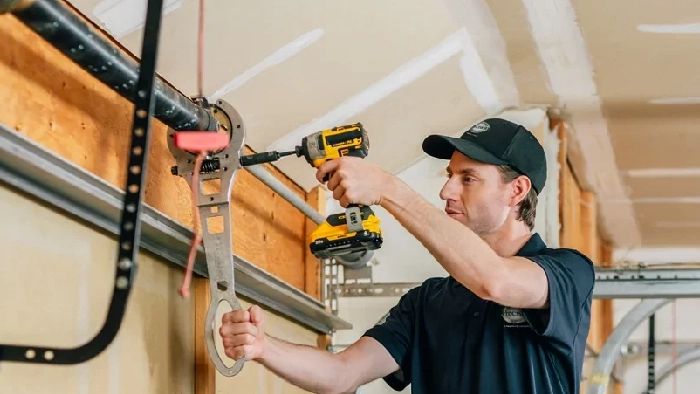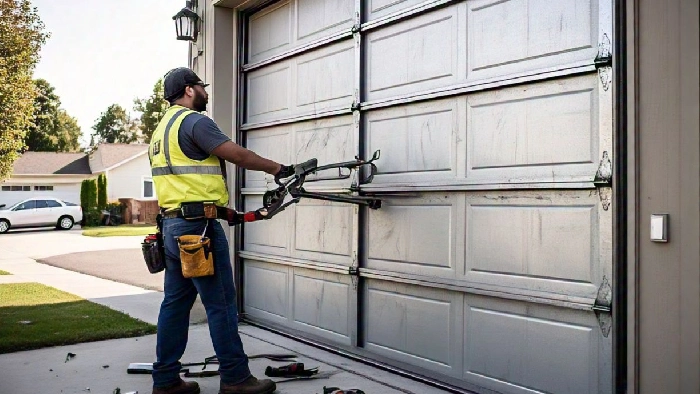Can I Use My Garage Door If One Spring Is Broken In Los Angeles?
Introduction
When it comes to maintaining our homes, we often overlook one of the most essential components—the garage door. A malfunctioning garage door isn't just an inconvenience; it can also pose safety risks and lead to expensive repairs if not addressed promptly. Among the various issues that can arise with a garage door, broken springs are one of the most common culprits. If you're living in Los Angeles and dealing with this problem, you might be wondering about the repair costs and how to use your garage door safely until it's fixed.
In this comprehensive guide, we will explore everything you need to know about broken garage door springs in Los Angeles, including the average repair costs, safety tips for usage, and key factors influencing these prices. So, buckle up as we dive into the intricate world of garage doors!
Understanding Garage Door Springs
What Are Garage Door Springs?
Garage door springs are crucial components that counterbalance the weight of the door, allowing it to open and close smoothly. There are two primary types of springs used in residential garage doors: torsion springs and extension springs.
- Torsion Springs: These are mounted above the closed garage door and provide lift through torsion (twisting) energy.
- Extension Springs: These are found on either side of the door and extend when the door is opened.
Why Do Garage Door Springs Break?
Several factors can lead to broken springs:

Signs of Broken Garage Door Springs
How Can You Tell If Your Springs Are Broken?
Recognizing a broken spring is essential for timely repairs. Here are some signs:
- The garage door won't open or close at all.
- It opens unevenly or jerks during operation.
- There’s a loud snapping noise when trying to operate it.
- The top of the door appears crooked when closed.
Safety First: Using a Garage Door With Broken Springs
Is It Safe to Use Your Garage Door with Broken Springs?
Using a garage door with broken springs is generally not advisable due to safety concerns. A malfunctioning spring can cause the door to fall unexpectedly, leading to severe injuries or damage.
Temporary Measures
If you absolutely need access while waiting for repairs:
- Use manual operation if possible—disengage the opener and lift gently.
- Keep children and pets away from the area until it's fixed.
Broken Garage Door Springs in Los Angeles: Repair Costs
Average Repair Costs
When dealing with a broken garage spring in Los Angeles, repair costs can vary widely based on several factors:

| Factor | Estimated Cost Range | |----------------------------|----------------------| | Torsion Spring Replacement | $200 - $350 | | Extension Spring Replacement | $150 - $250 | | Labor Costs | $50 - $100 | | Emergency Service | Additional $100 fix garage door opener issues - $200|

Factors Influencing Repair Costs
Finding Reliable Repair Services
How Do You Choose a Trusted Garage Door Repair Service?
Choosing a reputable service provider is critical for ensuring quality repairs:
Questions To Ask Before Hiring
Before finalizing your choice, consider asking these questions:
- What warranties do you offer?
- How long does it typically take for repairs?
- Are there any additional fees I should know about?
Preventive Maintenance Tips for Your Garage Door
How Can You Prolong The Life Of Your Garage Door Springs?
Regular maintenance can save you time and money down the road! Here are some tips:
DIY vs Professional Repairs
Can You Fix a Broken Garage Door Spring Yourself?
While DIY may seem tempting, it's often best left to professionals due to safety concerns:
Risks Involved
- Tension in spring systems can be dangerous; improper handling may result in injury.
When DIY Might Be Acceptable
If you’ve got experience with tools and mechanical systems (and proper safety gear), minor adjustments might be feasible—but always prioritize caution!
FAQs About Broken Garage Door Springs
1. What causes my garage door spring to break?
A combination of wear & tear, rust exposure, improper installation, or lack of maintenance can lead to spring failure.
2. How long do garage door springs last?
Typically between 7–10 years or around 10,000 cycles.
3. Can I use my automatic opener if my spring is broken?
It's not recommended as this could further strain other components or cause accidents.
4. What's more expensive—torsion or extension spring replacement?
Generally speaking, torsion spring replacement tends to be pricier due to complexity.
5. How often should I have my garage door serviced?
Annual inspections are ideal for maintaining optimal functionality.
6. Are there alternatives if I can't afford immediate repairs?
Consider temporary manual operation until you're able to budget for professional help.
Conclusion
In summary, dealing with broken garage door springs is no small matter—especially in bustling cities like Los Angeles where timely access is crucial! Understanding repair costs alongside safe usage tips empowers homeowners not only during emergencies but also promotes proactive maintenance habits that extend their system's lifespan.
If you've found yourself grappling with this issue recently—or simply want peace of mind—take action today! Whether through professional services or careful DIY tasks (when appropriate), keeping those heavy doors functioning smoothly is vital for any homeowner’s well-being! So remember—safety first!
This article aims not just at informing but at empowering you as a homeowner faced with potential issues related to your garage doors—because knowledge truly is power!